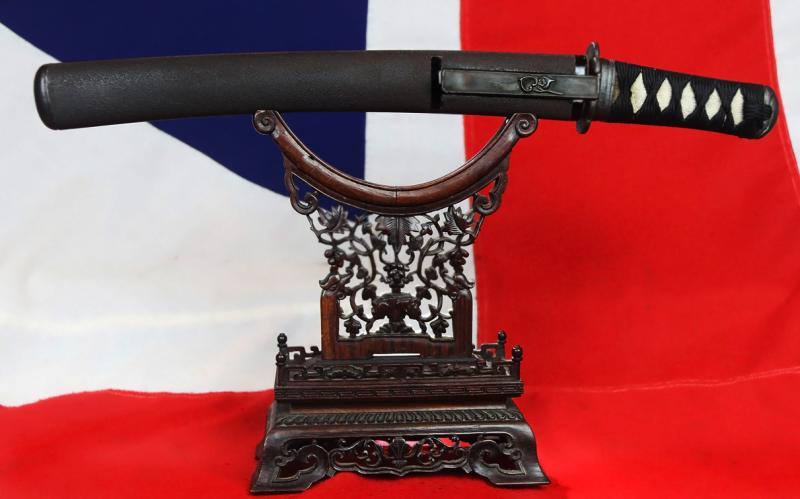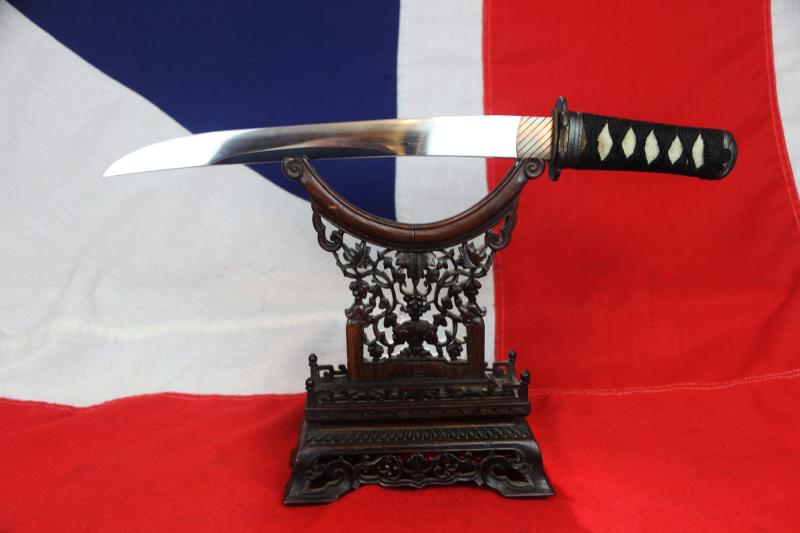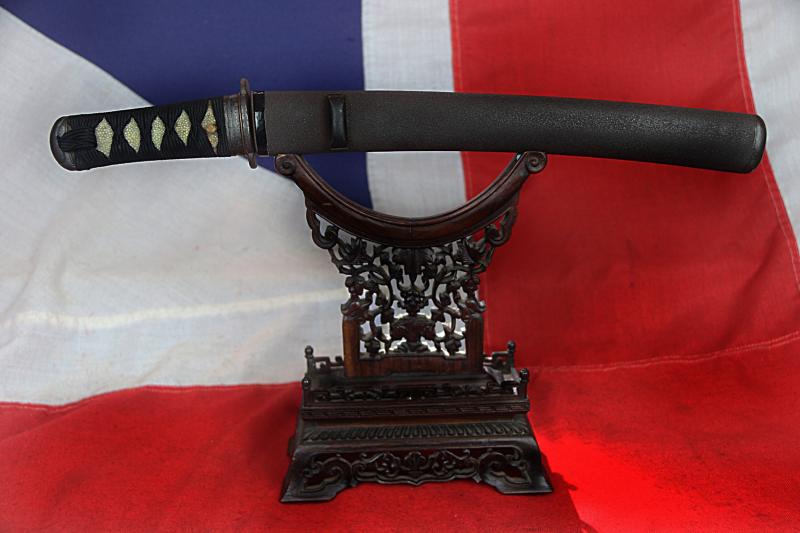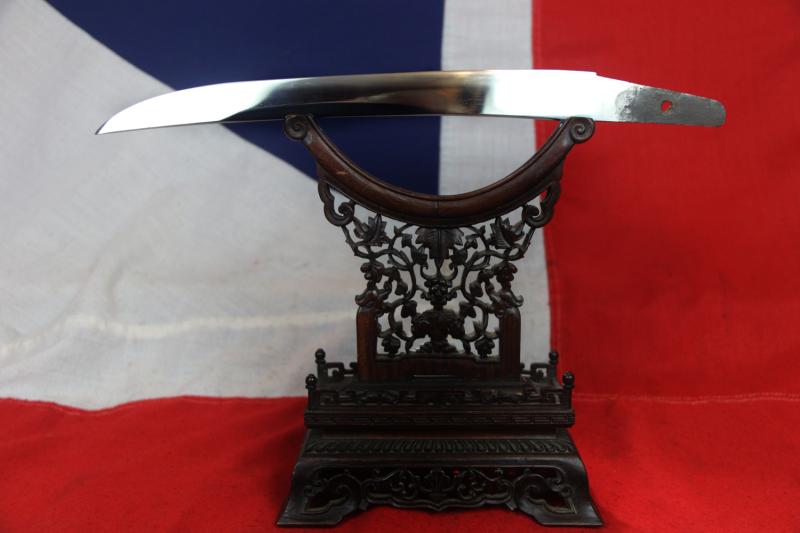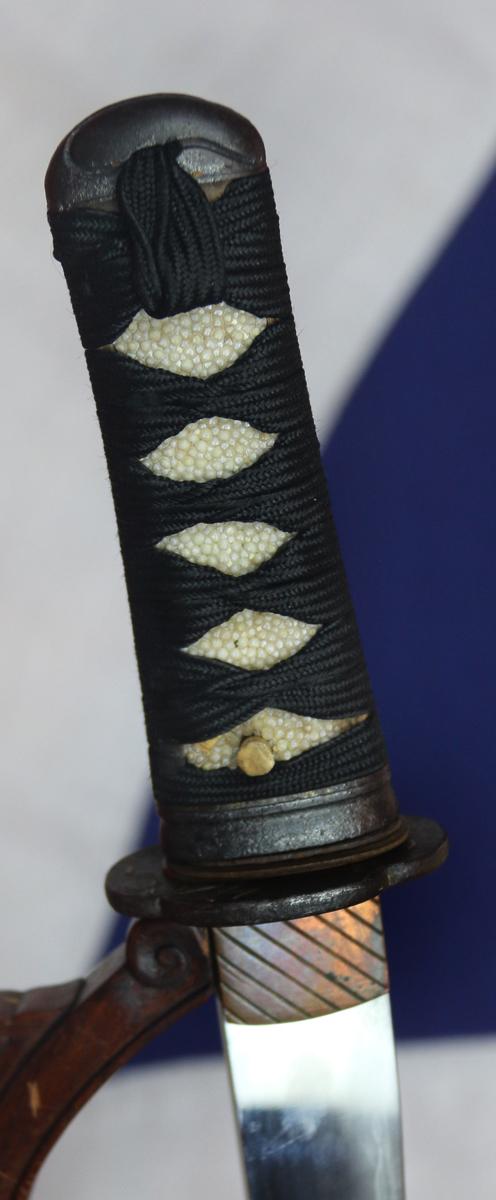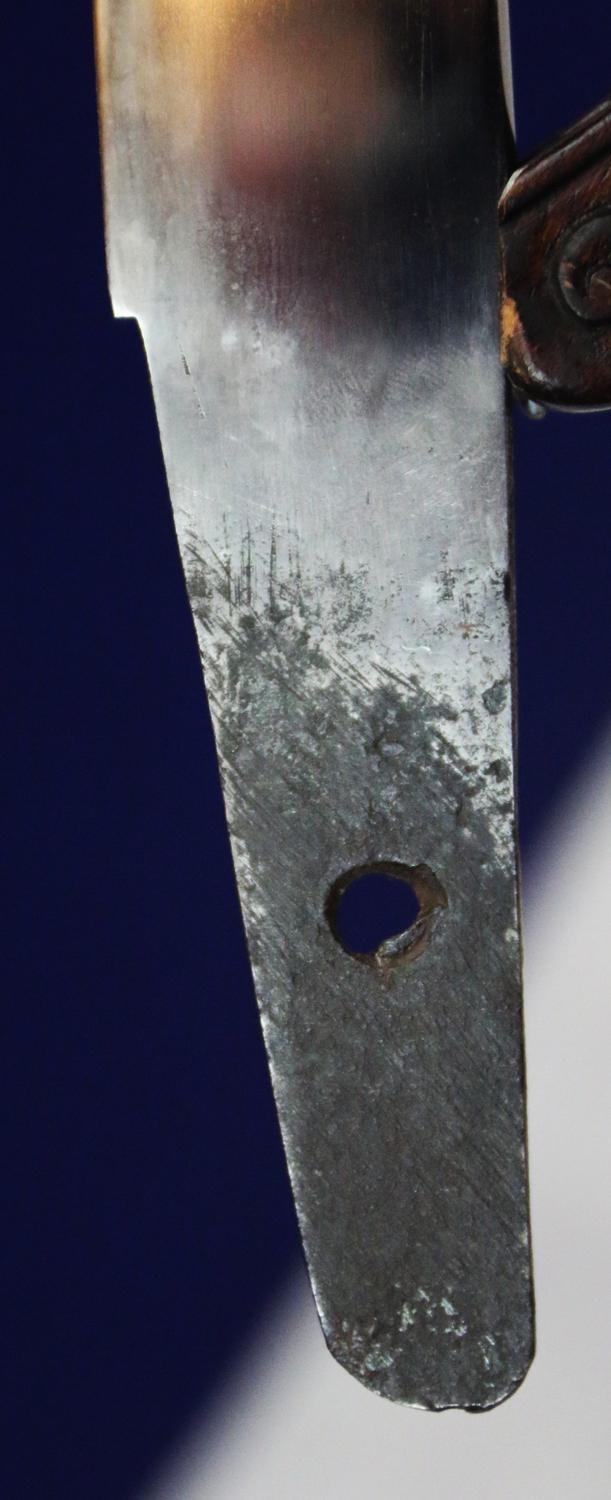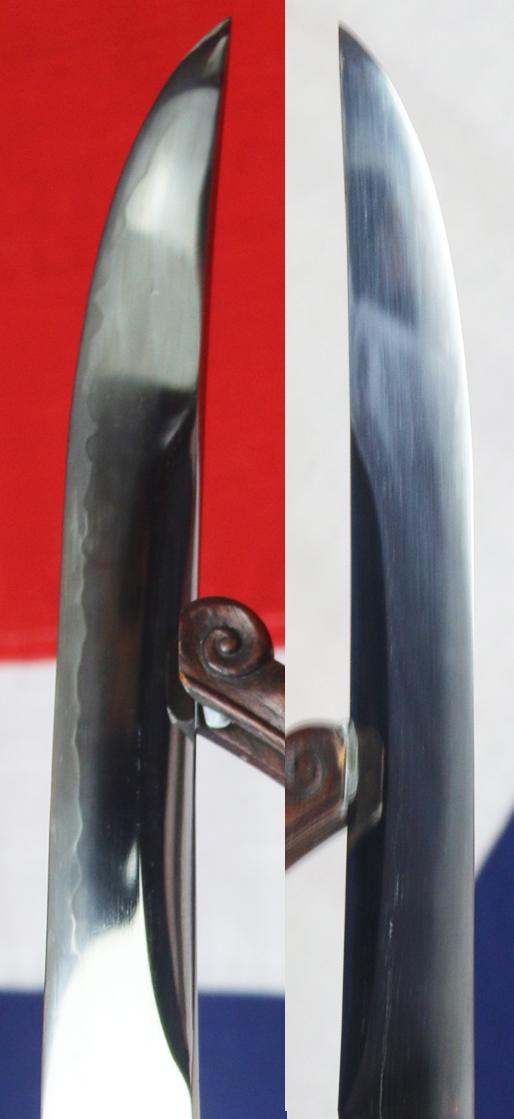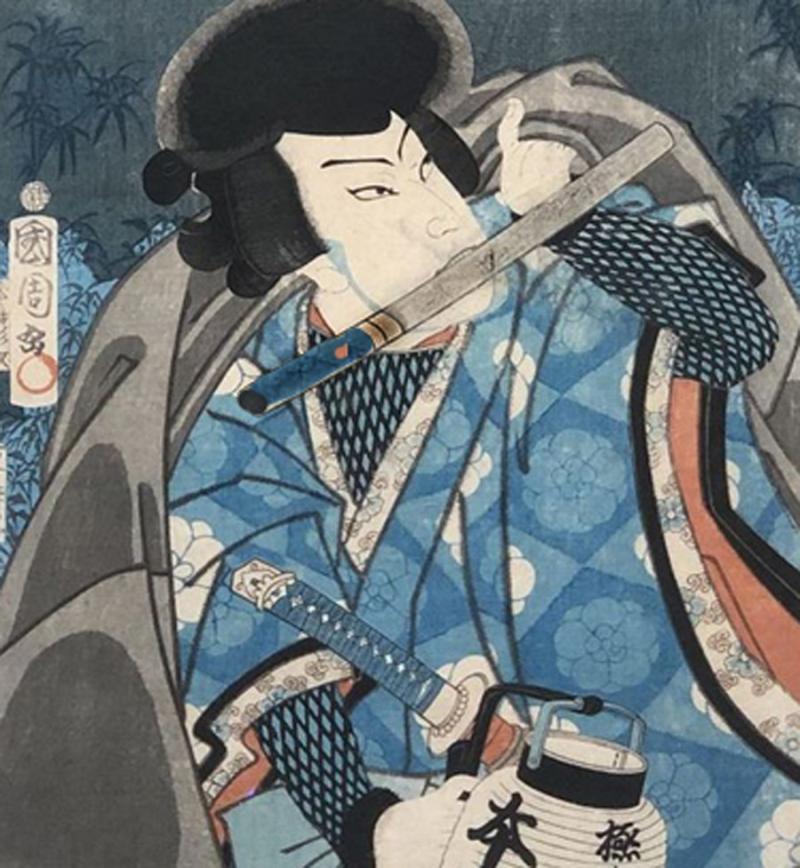A Superb Antique, Shinto Era, Unokubi (鵜首) Zukuri Blade Tantō, 17th Century
Completely fitted with original Edo period koshirae. Made from probably from after the era of the Battle of Sekigahara, Shinjitai: 関ヶ原の戦い; Kyūjitai: 關ヶ原の戰い
Unokubi (鵜首): An uncommon tantō style akin to the kanmuri-otoshi, with a back that grows abruptly thinner around the middle of the blade; however, the unokubi zukuri regains its thickness just before the point. There is normally a short, wide groove {hi} extending to the midway point on the blade, this is a most unusual form of unokubi zukuri blade tanto without a hi. It has a copper, counter-striped copper habaki, with original Edo period iron Higo school fuchi-kashira, iron mokko form tsuba with some inlaid copper gilt leaf decoration, black tsuka-ito binding. In its original edo period black ishime {stone finish} lacquered saya with iron kojiri and shakudo-nanako, shirimono kodzuka decorated with leaves, fitted in the saya pocket. The hamon is gunome-midare with some togari (pointed elements
The blade is absolutely stunning. The Hamon is the pattern we see on the edge of the blade of any Nihonto (日本刀) and it is not merely aesthetic, but is due to the differential tempering with clay applied to weapons in the forging process. Japanese katanas are unique in the way of the forging process, where apart from the materials the system is tremendously laborious. In short, before temper, the steel has different clays applied that when submerged in water causing the characteristic blade curvature and the pattern of the hamon. This also causes the katanas to be flexible and can be very sharp, since the hardening of the steels at different temperatures causes a part of the sword to be softer and more flexible called Mune or loin and the other harder and brittle, thus having a High quality cutting edge capable of making precise and lethal cuts.
There are various types and variants, some simple and others very complex. Depending on how the clay is applied, it can form numerous forms and types of hamon.
According to legend, Amakuni Yasutsuna developed the process of differential hardening of the blades around the 8th century. The emperor was returning from battle with his soldiers when Yasutsuna noticed that half of the swords were broken:
Amakuni and his son, Amakura, picked up the broken blades and examined them. They were determined to create a sword that will not break in combat and they were locked up in seclusion for 30 days. When they reappeared, they took the curved blade with them. The following spring there was another war. Again the soldiers returned, only this time all the swords were intact and the emperor smiled at Amakuni.
Although it is impossible to determine who invented the technique, surviving blades from Yasutsuna around AD 749–811 suggest that, at the very least, Yasutsuna helped establish the tradition of differentially hardening blades
The Battle of Sekigahara (Shinjitai: 関ヶ原の戦い; Kyūjitai: 關ヶ原の戰い,Sekigahara no Tatakai) was a decisive battle on October 21, 1600 (Keichō 5, 15th day of the 9th month) in what is now Gifu Prefecture, Japan, at the end of the Sengoku period. This battle was fought by the forces of Tokugawa Ieyasu against a coalition of Toyotomi loyalist clans under Ishida Mitsunari, several of which defected before or during the battle, leading to a Tokugawa victory. The Battle of Sekigahara was the largest battle of Japanese feudal history and is often regarded as the most important. Mitsunari's defeat led to the establishment of the Tokugawa shogunate.
Tokugawa Ieyasu took three more years to consolidate his position of power over the Toyotomi clan and the various daimyō, but the Battle of Sekigahara is widely considered to be the unofficial beginning of the Tokugawa shogunate, which ruled Japan for another two and a half centuries
A tanto would most often be worn by Samurai, and it was very uncommon to come across a non samurai with a tanto. It was not only men who carried these daggers, women would on occasions carry a small tanto called a kaiken in their obi which would be used for self-defence. In feudal Japan a tanto would occasionally be worn by Samurai in place of the wakizashi in a combination called the daisho, which roughly translates as big-little, in reference to the big Samurai Sword (Katana) and the small dagger (tanto). Before the rise of the katana it was more common for a Samurai to carry a tachi and tanto combination as opposed to a katana and wakizashi.
Code: 25350
2750.00 GBP

